Photographs: Babu/Reuters BS Reporter in New Delhi
The Bharatiya Janata Party’s prime ministerial candidate Narendra Modi on Thursday said his idea of a better governance model would stand on the feet of greater economic federalism, more harmony in decision making and fewer laws.
He said he favoured a goods and services tax -- but not before suitable information-technology infrastructure was put in place -- and told traders they could combat the challenge of big brands by increased use of e-commerce.
Foreign investment wasn’t a sin but an opportunity, Modi said, though without revealing his stand on foreign direct investment in multi-brand retail.
Besides calling for a stop to migration to big cities, he said public-sector undertakings shouldn’t be disinvested but made to run professionally.
. . .
How Modi plans to eradicate poverty, push growth
Image: Supporters of Bharatiya Janata Party listen to Gujarat's chief minister Narendra Modi, the prime ministerial candidate for BJP, during a live video broadcast campaign on 'Talk over tea with Modi', in Chandigarh.Photographs: Ajay Verma/Reuters
Modi’s Thursday in the capital was marked by frenetic activity, as he criss-crossed the city to address a gathering of traders in the morning, another of professionals in the afternoon and a third comprising corporate honchos and economic experts in the evening. In between these, he also attended his party’s meetings related to election preparedness.
In an address to a gathering of industry captains, top corporate executives and economic experts -- from India and abroad -- he invoked Mahatma Gandhi’s name several times.
In what appeared a response to the traction the Aam Aadmi Party’s participatory democracy call had gathered, he said development could not merely be a government agenda but a jan andolan (a people’s movement).
He said his inspiration was Gandhi, who succeeded in making the fight for independence a battle every Indian could participate in.
Even an effort to ensure India’s energy security should become a popular movement, where each person should think of saving electricity and use of fuel, he said.
. . .
How Modi plans to eradicate poverty, push growth
Image: A tea stall vendor, who is a supporter of Bharatiya Janata Party, poses while wearing a mask of Narendra Modi, Gujarat's chief minister, in Kolkata.Photographs: Rupak De Chowdhuri/Reuters
The Gujarat chief minister borrowed from Gandhi’s concept of trusteeship to elaborate on his idea of leadership.
He said the prime minister should be the trustee of the people, able to call on the populace, in addressing problems.
Pitching for strengthening India’s federal structure, he said the real team in the country wasn’t the PM and his Cabinet but the PM and states’ chief ministers.
Modi’s speech reflected much homework and an effort to explain his understanding of economic liberalism in common man’s language.
Unfortunately, in the absence of live translation, the speech delivered in Hindi was lost on the economic experts and executives the India Foundation, the organisers of the event, had invited from abroad.
. . .
How Modi plans to eradicate poverty, push growth
Image: A BJP supporter wears a Narendra Modi mask at a rally.Photographs: Amit Dave/Reuters
Modi also detailed his vision for specific sectors of the economy.
He said poverty needed to be eliminated in a mission mode and people should be assured a life of dignity, besides more jobs.
It was necessary to give all the 1.21 billion Indians the freedom of choice, he noted.
Where to aim?
Modi said inequality, to him, was as important a challenge as growth.
In what might have come as a bit of a surprise to many who advocate greater urbanisation, he said migration to the cities needed to be stopped, which was only possible if rural people had access to urban amenities.
Modi said corporate India might want a road map for 8.4 per cent annual economic growth but poverty alleviation and removing inequality was for him as much of a challenge.
Further borrowing from Gandhi, he said the health sector needed a refocus in priorities. The target should be on wellness and illness.
. . .
How Modi plans to eradicate poverty, push growth
Image: Narendra Modi.Photographs: Reuters
Modi said Gandhi was a firm believer in cleanliness, the only way to shift from curative to preventive health care.
In education, the focus should be to train teachers.
He said India had good institutions to train chief executives but not enough to make good teachers.
“We should be able to export teachers and nurses.
“The world is in need of teachers.
“A businessman who goes abroad can convert a rupee into a dollar but a teacher can bring an entire generation with him,” he said, stressing on skill development.
Modi said India needed to focus not only on IT but also bio-technology and environmental technology, as well as research and innovation.
He said foreign investment was an opportunity and not the sin many perceived it to be.
. . .
How Modi plans to eradicate poverty, push growth
Image: Narendra Modi.Photographs: Amit Dave/Reuters
He added foreign investment should be welcomed to increase the productivity of India’s agricultural sector.
However, he didn’t refer to FDI in multi-brand retailing.
And, he called for fewer laws.
He said it was true that there were governance issues but there also were too many laws. At another of his speeches on Thursday, Modi mocked at the tendency of making more laws like that on a Lok Pal, the citizen ombudsman, as if the entire country was corrupt.
He ended the speech with his governance vision.
“Speedy yet sustainable economic growth, which is inclusive, respectful of the individual, responsive to innovation, responsible for future generations, improved standards of living, increased human well-being and assured social justice,” he said.
In the afternoon, Modi had told a gathering of chartered accountants and other professionals that his party favoured GST but faulted the United Progressive Alliance government’s preparedness.
. . .
How Modi plans to eradicate poverty, push growth
Image: Narendra Modi flies a kite during a kite flying festival in Ahmedabad.Photographs: Amit Dave/Reuters
He said the indirect tax reform could not be rolled out before putting in place IT infrastructure and addressing states’ concerns.
“We are in favour of GST.
“But till online operations are put in place, GST is impossible.
“IT infrastructure is the first requirement for GST.
“But the Centre is not prepared for it,” Modi said at the event organised by the Bharatiya Vitta Salahkar Samiti. GST, which is to replace excise duty and service tax at the Centre’s end and value-added tax on states’ front, was originally scheduled to come into effect from April 1, 2010.
To a gathering of representatives of 1,500 trade federations from across India, Modi implored them to use e-commerce to fight the challenge posed by big brands.
Modi not only kept from echoing his party’s line on FDI in retail but ensured his stand on the issue remained open-ended. In a war cry of sorts, he said India’s traders -- more than its soldiers -- were known for their risk-taking capacity.
. . .
How Modi plans to eradicate poverty, push growth
Image: A child carries a national flag.Photographs: Reuters
Straight talk
On governance
“The fashion to run the country from Delhi must end. States should be more empowered. . . states must be trusted to govern”
On e-commerce
“Trading community shouldn’t run away from global challenges. Don’t be scared of online growth. Face the challenges and modernise your supply chain and delivery system... demand from govt to help build your capacity”
On system and laws
“System does not run on laws but on trust. The law enters when the system is broken. This is the basic principle from which will begin the total overhaul of the governance I am talking about”
On good & services tax
“We are in favour of goods & services tax. But till online operations are put in place, GST is impossible. IT infrastructure is the first requirement for GST. But the Centre is not prepared for it”

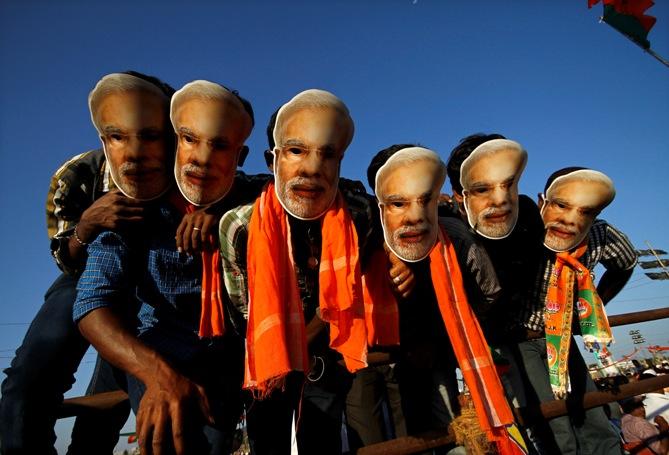
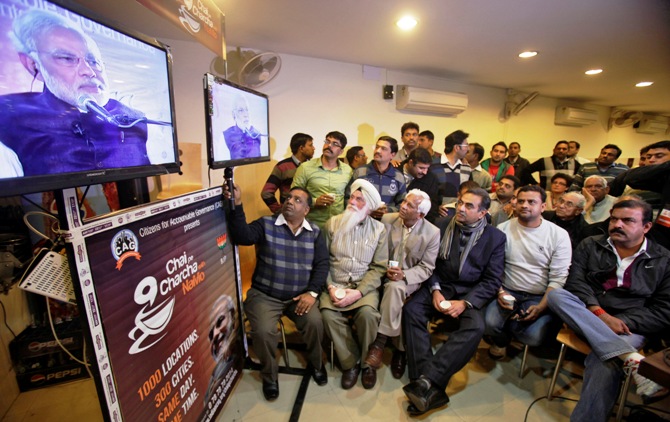
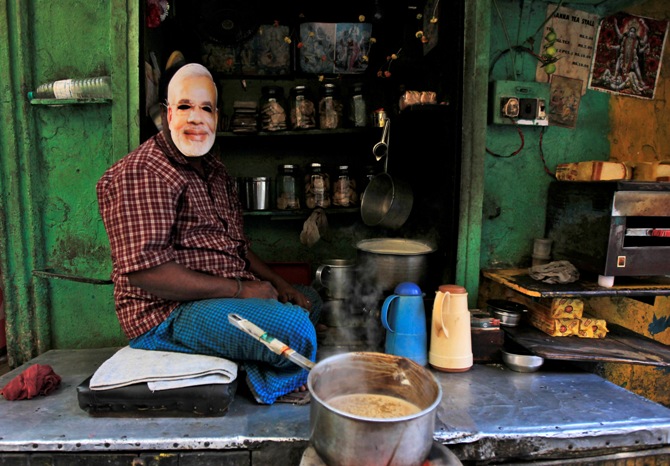
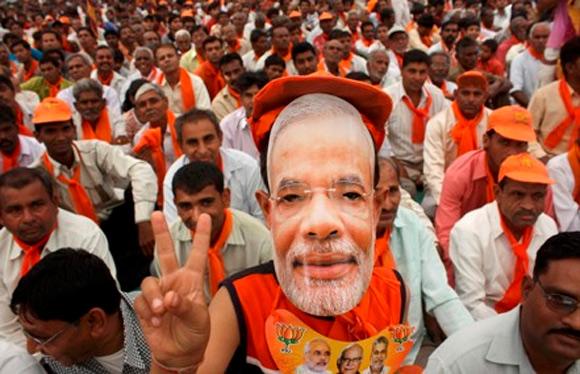
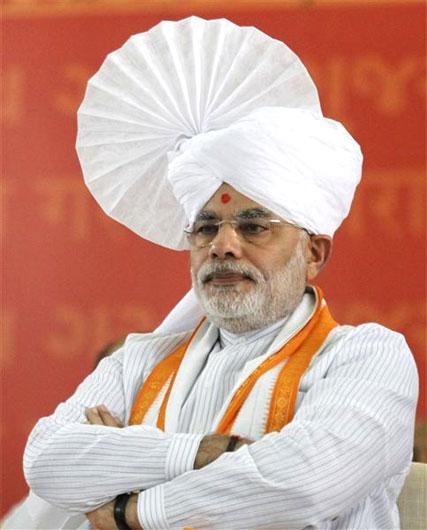
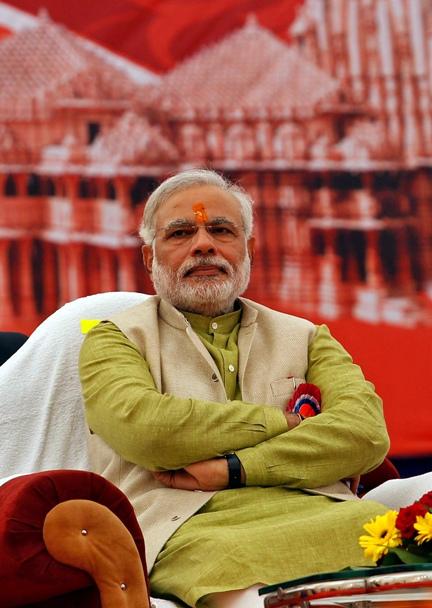
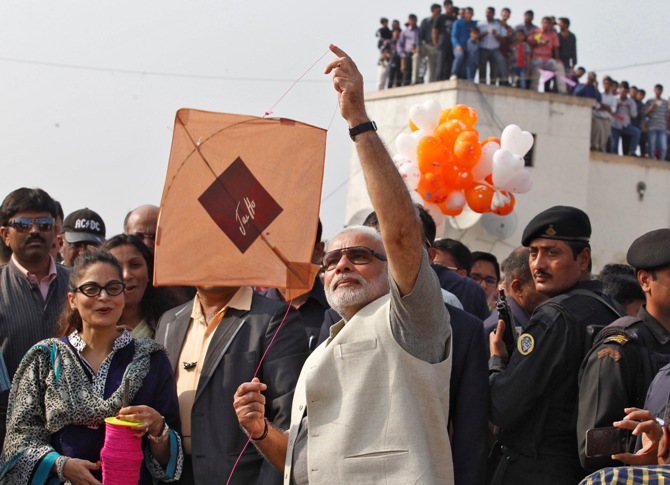
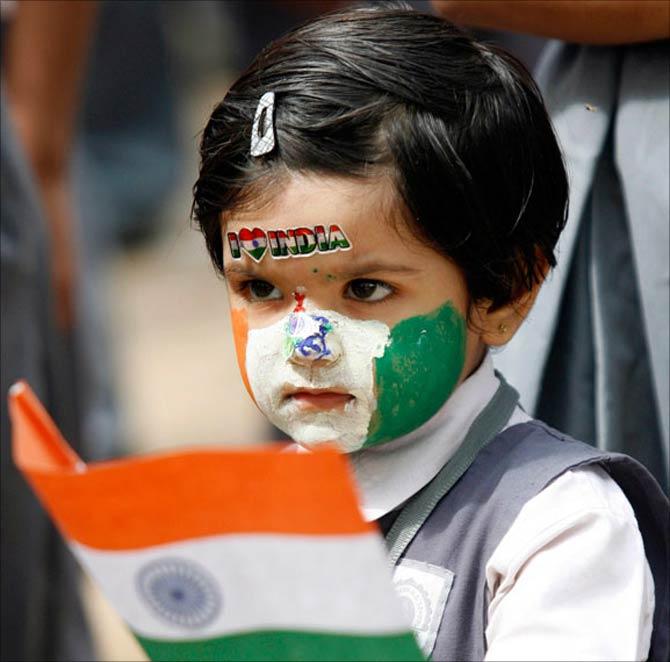

article